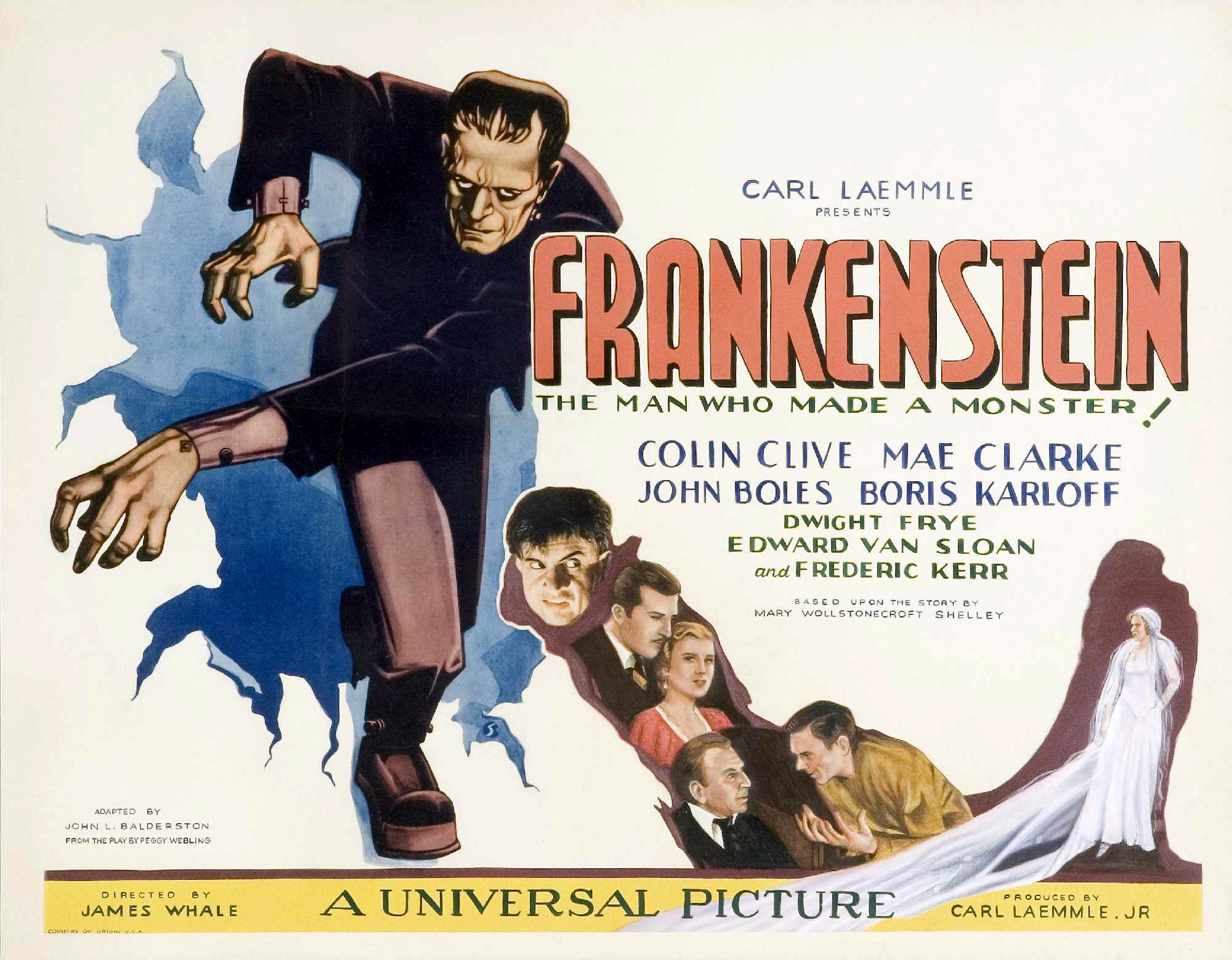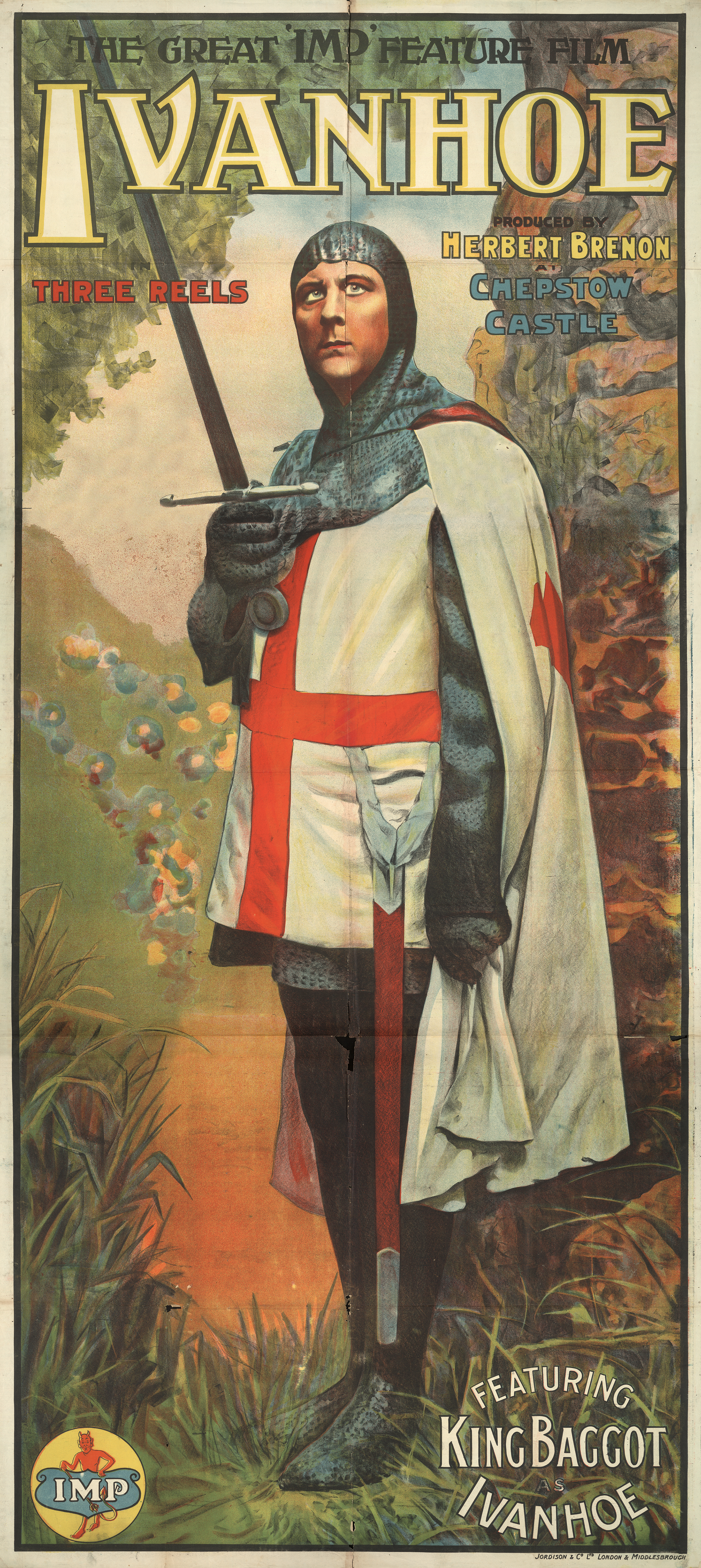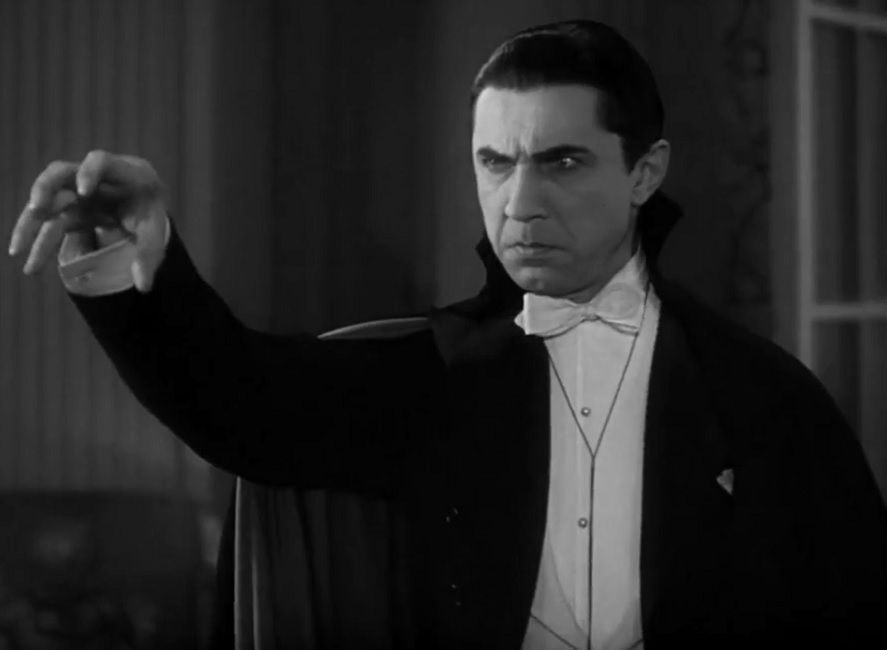|
Young Frankenstein
''Young Frankenstein'' is a 1974 American comedy horror film directed by Mel Brooks. The screenplay was co-written by Brooks and Gene Wilder. Wilder also starred in the lead role as the title character, a descendant of the infamous Dr. Victor Frankenstein. Peter Boyle portrayed the monster. The film co-stars Teri Garr, Cloris Leachman, Marty Feldman, Madeline Kahn, Kenneth Mars, Richard Haydn, and Gene Hackman. The film is a parody of the classic horror film genre, in particular the various film adaptations of Mary Shelley's 1818 novel '' Frankenstein; or, The Modern Prometheus'' produced by Universal Pictures in the 1930s. Much of the lab equipment used as props was created by Kenneth Strickfaden for the 1931 film ''Frankenstein''. To help evoke the atmosphere of the earlier films, Brooks shot the picture entirely in black and white, a rarity in the 1970s, and employed 1930s-style opening credits and scene transitions such as iris outs, wipes, and fades to black. ... [...More Info...] [...Related Items...] OR: [Wikipedia] [Google] [Baidu] |
John Alvin
John Henry Alvin (November 24, 1948 – February 6, 2008) was an American cinematic artist and painter who illustrated many movie posters. Alvin created posters and key art for more than 135 films, beginning with the poster for Mel Brooks' ''Blazing Saddles'' (1974). His style of art became known as ''Alvinesque'' by friends and colleagues in the entertainment industry. Alvin's work includes the movie posters for ''E.T. the Extra-Terrestrial'', ''Blade Runner'', '' Gremlins'', '' The Goonies'', ''The Color Purple'', '' The Little Mermaid'', '' Batman Returns'', '' Beauty and the Beast'', ''Aladdin'', ''The Lion King'', '' Space Jam'', ''The Emperor's New Groove'', '' Harry Potter and the Philosopher's Stone'', and '' Looney Tunes: Back in Action''. He also created the anniversary posters for ''Star Wars''. Early life and education John Alvin was born on November 24, 1948, in Hyannis, Massachusetts. His parents were in the United States military and the family was relocated ... [...More Info...] [...Related Items...] OR: [Wikipedia] [Google] [Baidu] |
Box Office Mojo
Box Office Mojo is an American website that tracks box-office revenue in a systematic, algorithmic way. The site was founded in 1998 by Brandon Gray, and was bought in 2008 by IMDb IMDb (an abbreviation of Internet Movie Database) is an online database of information related to films, television series, home videos, video games, and streaming content online – including cast, production crew and personal biographies, ..., which itself is owned by Amazon. History Brandon Gray began the site on August 7, 1998, making forecasts of the top-10 highest-grossing films in the United States for the following weekend. To compare his forecasts to the actual results, he started posting the weekend grosses and wrote a regular column with box-office analysis. In 1999, he started to post the Friday daily box-office grosses, sourced from Exhibitor Relations, so that they were publicly available online on Saturdays and posted the Sunday weekend estimates on Sundays. Along with th ... [...More Info...] [...Related Items...] OR: [Wikipedia] [Google] [Baidu] |
Wipe (transition)
300px, Examples of various wipe transitions In filmmaking, a wipe is a type of film transition where one shot replaces another by travelling from one side of the frame to another or with a special shape. If the wipe proceeds from two opposite edges of the screen toward the center or vice versa, it is known as a barn door wipe (named for its similarity to a pair of doors opening or closing). The following are some specific styles of wipes: * An iris slow is a wipe that takes the shape of a growing or shrinking circle. It has been frequently used in animated short films, such as those in the ''Looney Tunes'' and ''Merrie Melodies'' cartoon series, to signify the end of a story. When used in this manner, the iris wipe may be centered on a certain focal point and may be used as a device for a "parting shot" joke, a fourth wall-breaching wink by a character, or other purposes. Optional graphic (i.e. rips) occasionally overlay it to achieve a certain effect like an iris tearing tra ... [...More Info...] [...Related Items...] OR: [Wikipedia] [Google] [Baidu] |
Iris Shot
An iris shot is a technique used in silent film and television sometimes to emphasize a detail of a scene above all others, more commonly to end or open a scene. The film camera's iris is slowly closed or opened, so that what is visible on film appears in a decreasing or increasing circle, surrounded by black. The iris shot used at the start of a scene is an iris in and an iris out is used at the end of a film/episode or a particular scene. ''Iris in'' is also used after a previous ''iris out'' to allow different episodes or scenes to begin in a more natural way. Iris shots are also used to put emphasis on a particular aspect of film, usually something of importance. After the silent film era, the technique became less used, and has mainly been used only for ironic or comedic effect. An example of non-ironic iris shot as part of the grammar of film is found in "Life Lessons", the Martin Scorsese-directed segment of '' New York Stories'' (Touchstone, 1989). Non-silent era slapsti ... [...More Info...] [...Related Items...] OR: [Wikipedia] [Google] [Baidu] |
Black And White
Black-and-white (B&W or B/W) images combine black and white in a continuous spectrum, producing a range of shades of grey. Media The history of various visual media began with black and white, and as technology improved, altered to color. However, there are exceptions to this rule, including black-and-white fine art photography, as well as many film motion pictures and art film(s). Photography Contemporary use Since the late 1960s, few mainstream films have been shot in black-and-white. The reasons are frequently commercial, as it is difficult to sell a film for television broadcasting if the film is not in color. 1961 was the last year in which the majority of Hollywood films were released in black and white. Computing In computing terminology, ''black-and-white'' is sometimes used to refer to a binary image consisting solely of pure black pixels and pure white ones; what would normally be called a black-and-white image, that is, an image containing shades of ... [...More Info...] [...Related Items...] OR: [Wikipedia] [Google] [Baidu] |
Frankenstein (1931 Film)
''Frankenstein'' is a 1931 American pre-Code science fiction horror film directed by James Whale, produced by Carl Laemmle Jr., and adapted from a 1927 play by Peggy Webling, which in turn was based on Mary Shelley's 1818 novel '' Frankenstein; or, The Modern Prometheus''. The Webling play was adapted by John L. Balderston and the screenplay written by Francis Edward Faragoh and Garrett Fort, with uncredited contributions from Robert Florey and John Russell. ''Frankenstein'' stars Colin Clive as Henry Frankenstein, an obsessed scientist who digs up corpses with his assistant in order to assemble a living being from body parts. The resulting creature, often known as Frankenstein's monster, is portrayed by Boris Karloff. The make-up for the monster was provided by Jack Pierce. Alongside Clive and Karloff, the film's cast also includes Mae Clarke, John Boles, Dwight Frye, and Edward Van Sloan. Produced and distributed by Universal Pictures, the film was a commercial succ ... [...More Info...] [...Related Items...] OR: [Wikipedia] [Google] [Baidu] |
Kenneth Strickfaden
Kenneth Strickfaden (May 23, 1896 – February 29, 1984) was an electrician, film set designer, and electrical special effects creator. Beginning with his effects on ''Frankenstein'' (1931) he became Hollywood's preeminent electrical special effects expert. He created the science fiction apparatus in more than 100 motion picture films and television programs, from the ''Frankenstein'' films to '' The Wizard of Oz'' and ''The Mask of Fu Manchu'' to television's ''The Munsters'', and his final work, ''Young Frankenstein ''Young Frankenstein'' is a 1974 American comedy horror film directed by Mel Brooks. The screenplay was co-written by Brooks and Gene Wilder. Wilder also starred in the lead role as the title character, a descendant of the infamous Dr. Victor ...'' (1974). External links * Missing Link Classic Horror ListingBook: Kenneth Strickfaden – Dr. Frankenstein's Electrician* Memorabilia Heritage Auction GalleriesModern Mechanix scan of a Popular Mechanics articl ... [...More Info...] [...Related Items...] OR: [Wikipedia] [Google] [Baidu] |
Universal Pictures
Universal Pictures (legally Universal City Studios LLC, also known as Universal Studios, or simply Universal; common metonym: Uni, and formerly named Universal Film Manufacturing Company and Universal-International Pictures Inc.) is an American film production and distribution company owned by Comcast through the NBCUniversal Film and Entertainment division of NBCUniversal. Founded in 1912 by Carl Laemmle, Mark Dintenfass, Charles O. Baumann, Adam Kessel, Pat Powers, William Swanson, David Horsley, Robert H. Cochrane, and Jules Brulatour, Universal is the oldest surviving film studio in the United States; the world's fifth oldest after Gaumont, Pathé, Titanus, and Nordisk Film; and the oldest member of Hollywood's "Big Five" studios in terms of the overall film market. Its studios are located in Universal City, California, and its corporate offices are located in New York City. In 1962, the studio was acquired by MCA, which was re-launched as NBCUniversal in 2 ... [...More Info...] [...Related Items...] OR: [Wikipedia] [Google] [Baidu] |
Frankenstein In Popular Culture
Mary Shelley's 1818 novel ''Frankenstein; or, The Modern Prometheus'', and the famous character of Frankenstein's monster, have influenced popular culture for at least a century. The work has inspired numerous films, television programs, video games and derivative works. The character of the Monster remains one of the most recognized icons in horror fiction. Film derivatives Silent era The first film adaptation of the tale, ''Frankenstein'', was made by Edison Studios in 1910, written and directed by J. Searle Dawley, with Augustus Phillips as Frankenstein, Mary Fuerte as Elizabeth, and Charles Ogle as the Monster. The brief (16 min.) story has Frankenstein chemically create the Creature in a vat. The Creature has encounters with the scientist until Frankenstein's wedding night, when true love causes the Creature to vanish. For many years, this film was believed lost. A collector announced in 1980 that he had acquired a print in the 1950s and had been unaware of its rar ... [...More Info...] [...Related Items...] OR: [Wikipedia] [Google] [Baidu] |
Universal Monsters
Universal Classic Monsters (also known as Universal Monsters and Universal Studios Monsters) is a media franchise based on a series of horror films primarily produced by Universal Pictures from the 1930s to the 1950s. Although not initially conceived as a franchise, the enduring popularity and legacy of the films and the characters featured in them has led the studio to market them under the collective brand name of Universal Studios Monsters. Steve Jones of ''USA Today'' described Universal's most famous monsters as "pop culture icons", specifically Dracula, Frankenstein, the Creature from the Black Lagoon, the Mummy, and the Wolf Man. Merchandising After the Universal horror films were syndicated to television, this led to a rise in the popularity of merchandise based on Frankenstein's monster and Dracula. Throughout the 1960s and into the 1970s, the Universal monsters were promoted via merchandizing which included: Halloween costumes, Aurora model kits, paperback novelizat ... [...More Info...] [...Related Items...] OR: [Wikipedia] [Google] [Baidu] |
Parody Film
A parody film or spoof film is a subgenre of comedy film that parodies other film genres or films as pastiches, works created by imitation of the style of many different films reassembled together. Although the subgenre is often overlooked by critics, parody films are commonly profitable at the box office. 1900s *'' Sherlock Holmes Baffled'' (1900) *'' The Little Train Robbery'' (1905) Clay (9) (2009) 1910s *''The Mystery of the Leaping Fish'' (1916) *''Teddy at the Throttle'' (1917) 1920s *''Mud and Sand'' (1922) *'' Three Ages'' (1923) *''Dr. Pyckle and Mr. Pryde'' (1925) *''Yes, Yes, Nanette'' (1925) 1930s * '' Free and Easy'' (1930) * ''Movie Crazy'' (1932) * '' Number Seventeen'' (1932) * '' Once in a Lifetime'' (1932) * ''Sons of the Desert'' (1933) * '' Babes in Toyland'' (1934) * ''Satan Met a Lady'' (1936) * ''The Man Who Was Sherlock Holmes'' (1937) * ''Ali Baba Goes to Town'' (1937) * '' Sh! The Octopus'' (1937) * '' The Gorilla'' (1939) 1940s *''The Great ... [...More Info...] [...Related Items...] OR: [Wikipedia] [Google] [Baidu] |
Gene Hackman
Eugene Allen Hackman (born January 30, 1930) is an American retired actor and former novelist. In a career that has spanned more than six decades, Hackman has won two Academy Awards, four Golden Globes, one Screen Actors Guild Award, two BAFTAs and one Silver Bear. Nominated for five Academy Awards, Hackman won Best Actor for his role as Jimmy "Popeye" Doyle in the critically acclaimed thriller '' The French Connection'' (1971) and Best Supporting Actor as "Little" Bill Daggett in Clint Eastwood's Western film '' Unforgiven'' (1992). His other nominations for Best Supporting Actor came with the films ''Bonnie and Clyde'' (1967) and '' I Never Sang for My Father'' (1970), with a second Best Actor nomination for '' Mississippi Burning'' (1988). Hackman's other major film roles included '' The Poseidon Adventure'' (1972), '' The Conversation'' (1974), '' French Connection II'' (1975), '' A Bridge Too Far'' (1977), ''Superman'' (1978) and its sequels '' Superman II'' (1980) and ' ... [...More Info...] [...Related Items...] OR: [Wikipedia] [Google] [Baidu] |



.jpg)

.jpg)